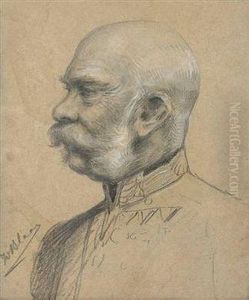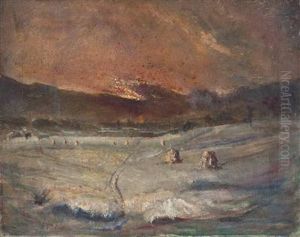Joseph Blaas Paintings
Joseph Blaas, also known as Karl Joseph Blaas or Carl von Blaas, was an Austrian painter born on July 28, 1842, in Vienna. He was the son of the historical painter Karl von Blaas and grew up in an artistic environment, which greatly influenced his career choice. Blaas was known for his genre paintings and portraits, often capturing scenes of everyday life with a focus on the people of his time.
Blaas received his artistic training from his father and later attended the Academy of Fine Arts Vienna, where he honed his skills under the guidance of other prominent artists. His work was well-received, and he began to gain recognition for his talent. Blaas's genre paintings often depicted lively, bustling scenes with a keen eye for detail and a particular interest in capturing the nuances of human expressions and interactions.
Throughout his career, Joseph Blaas exhibited his work in various European cities, including Vienna, Munich, and Paris. His paintings were appreciated for their vibrant realism and the sense of immediacy he brought to his depictions of Viennese life. Blaas was not only celebrated in his home country but also garnered international acclaim. This success allowed him to travel and exhibit his work widely, influencing other artists and contributing to the broader European art scene of the late 19th century.
Blaas's artistic legacy includes a significant body of work that provides a window into the social fabric of his time. His portraits are also notable, capturing the essence of his subjects with sensitivity and depth. His style remained consistent throughout his career, characterized by a traditional approach to painting, which stood in contrast to the emerging modernist movements of the early 20th century.
Joseph Blaas's contribution to art history is marked by his dedication to genre painting and his ability to chronicle the life and times of the Austro-Hungarian Empire. He passed away on February 19, 1932, in Vienna, leaving behind a rich portfolio of works that continue to be studied and admired for their historical value and artistic merit.



